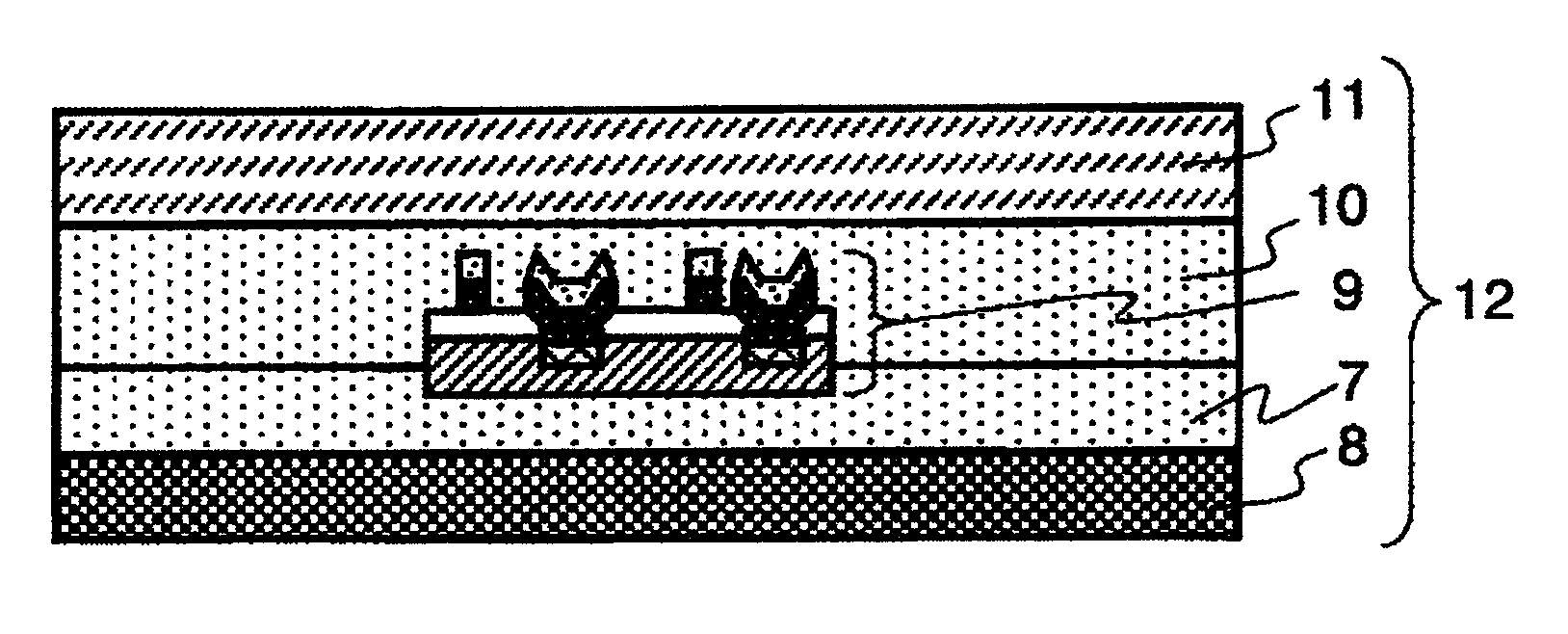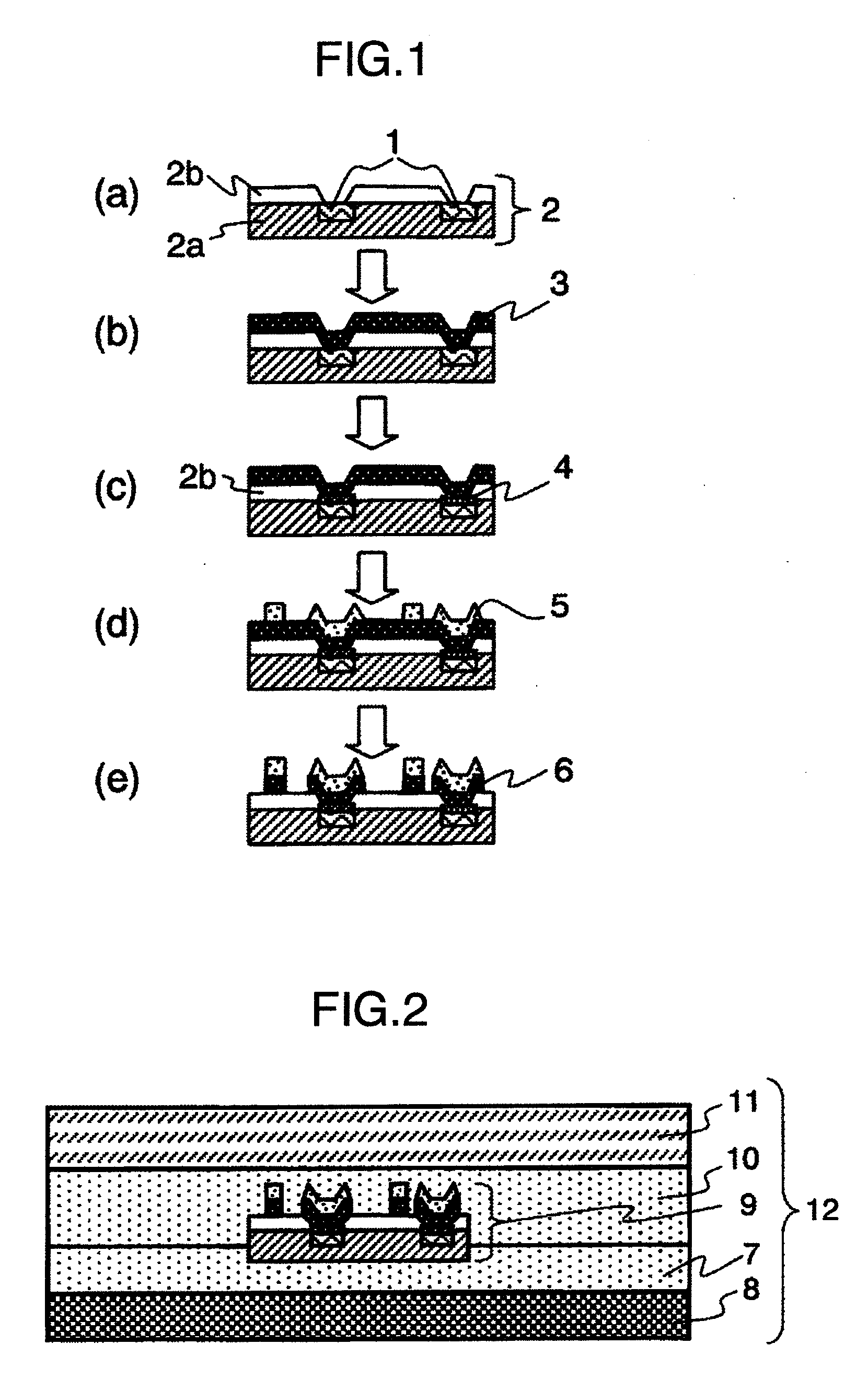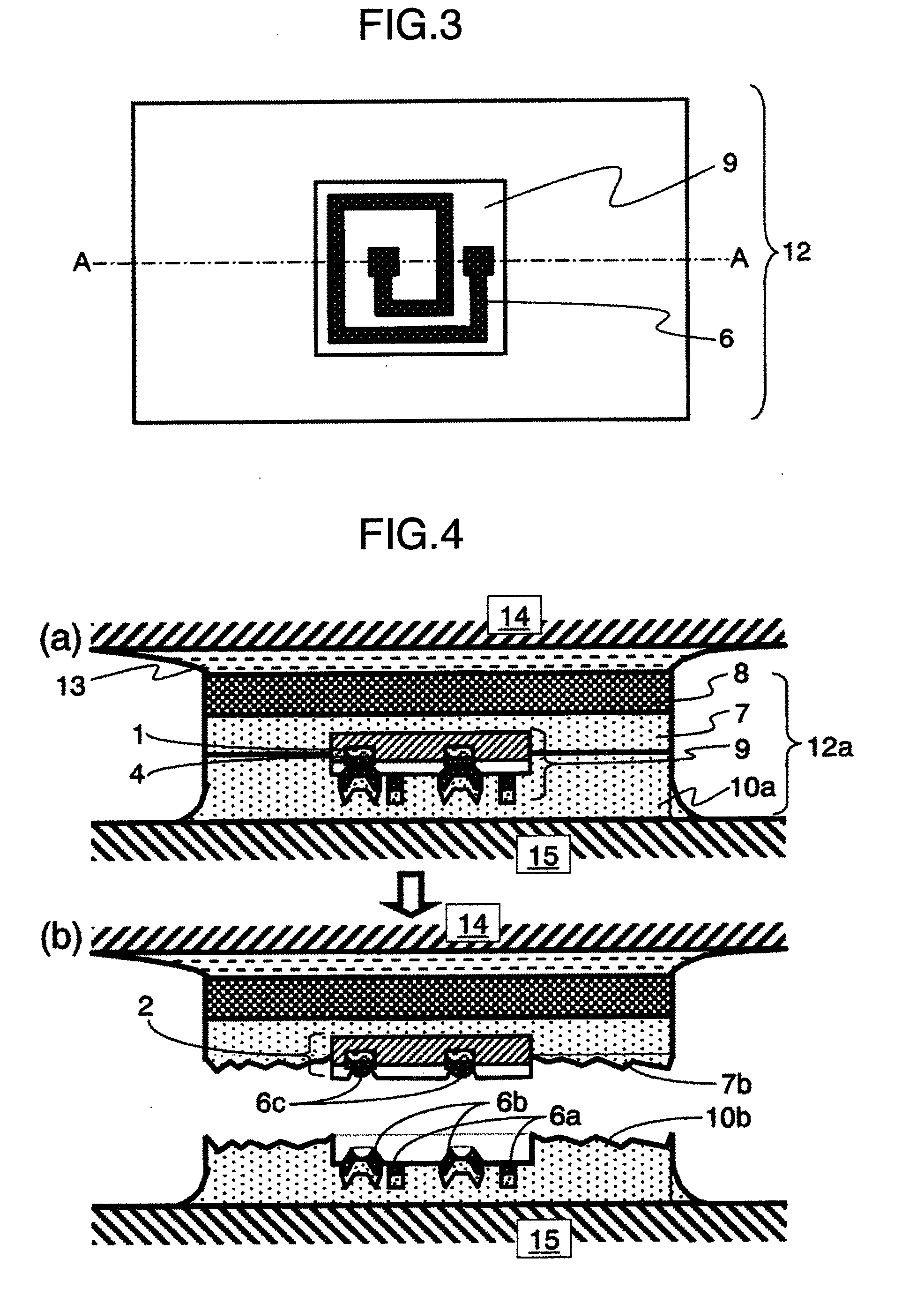RFID Tag
a manufacturing method and technology of a rfid tag, applied in the direction of burglar alarm mechanical actuation, burglar alarm by hand-held articles removal, instruments, etc., can solve the problem of difficult formation of fragile parts, easy peeling, weak sticking strength, etc. problem, to achieve the effect of preventing unpredicted antenna peeling and weak sticking strength
- Summary
- Abstract
- Description
- Claims
- Application Information
AI Technical Summary
Benefits of technology
Problems solved by technology
Method used
Image
Examples
first embodiment
[0030]In the present embodiment, a manufacturing process for forming an RFID tag in which an antenna joined to electrodes formed on a main surface of the RFID chip without a sticking layer between is connected to an RFID chip will be described with reference to FIG. 1. In general, the RFID chip (for example, a semiconductor element) is fabricated by using the so-called “wafer unit processing” of forming a plurality of RFID chip circuits on a main surface of a base member (for example, a semiconductor wafer) and then collectively forming antennas on electrodes respectively corresponding to a plurality of RFID chips. A plurality of RFID chips formed in the main surface of the base member are separated to RFID chips 9 shown in FIGS. 2 to 4 by cutting the base member. In FIG. 1, the manufacturing processes of the RFID chip are shown to be simplified by using a section of an individual piece 2 of a wafer cut out from the base member. However, this illustration does not exclude processing...
second embodiment
[0049]In the present embodiment, electrodes (electrodes for antenna connection) formed on the main surface of the RFID chip are connected to an antenna disposed on the main surface with a sticking layer (for example, an additional metal or alloy layer) between. Manufacturing processes of the RFID chip, a structure of an RFID tag (a seal type RFID chip) on which the RFID chip is mounted, and a form of putting the RFID tag to the adherend will now be described with reference to FIGS. 5 to 7. A section of the RFID chip 900 (wafer 110) shown in FIG. 5 and a section of a seal type RFID tag 1200 having the RFID chip mounted thereon shown in FIG. 6 are schematically drawn as an A-A section in FIG. 7 which shows a plane structure of the seal type RFID tag 1200 together with a perspective image of the main surface of the RFID chip 900 mounted on the RFID tag 1200. Herein, the sticking layer means a body which makes a joining strength of a pair of members joined via the sticking layer (for ex...
third embodiment
[0059]The RFID tag (12, 1200) described in the first embodiment and the second embodiment exchanges signals (information) with the external terminal by using a loop-shaped or spiral-shaped antenna mounted on the RFID tag. However, the carrier frequency of radio communication using the loop-shaped or spiral-shaped antenna is restricted to the HF band (3 to 30 MHz). If the distance between the RFID tag (12, 1200) and the external terminal is not kept within several cm, signals are not exchanged between them.
[0060]On the other hand, in the RFID tag having a dipole antenna, radio communication with the external terminal can be conducted at a carrier frequency in the UHF band (300 to 3000 MHz). Even if the RFID tag is at a distance of several meters from the external terminal, therefore, signals are exchanged between them.
[0061]As shown in FIG. 8, an RFID tag 12000 according to the present embodiment is formed by mounting an RFID chip 9000 as described in the first embodiment and the sec...
PUM
 Login to View More
Login to View More Abstract
Description
Claims
Application Information
 Login to View More
Login to View More - R&D
- Intellectual Property
- Life Sciences
- Materials
- Tech Scout
- Unparalleled Data Quality
- Higher Quality Content
- 60% Fewer Hallucinations
Browse by: Latest US Patents, China's latest patents, Technical Efficacy Thesaurus, Application Domain, Technology Topic, Popular Technical Reports.
© 2025 PatSnap. All rights reserved.Legal|Privacy policy|Modern Slavery Act Transparency Statement|Sitemap|About US| Contact US: help@patsnap.com



